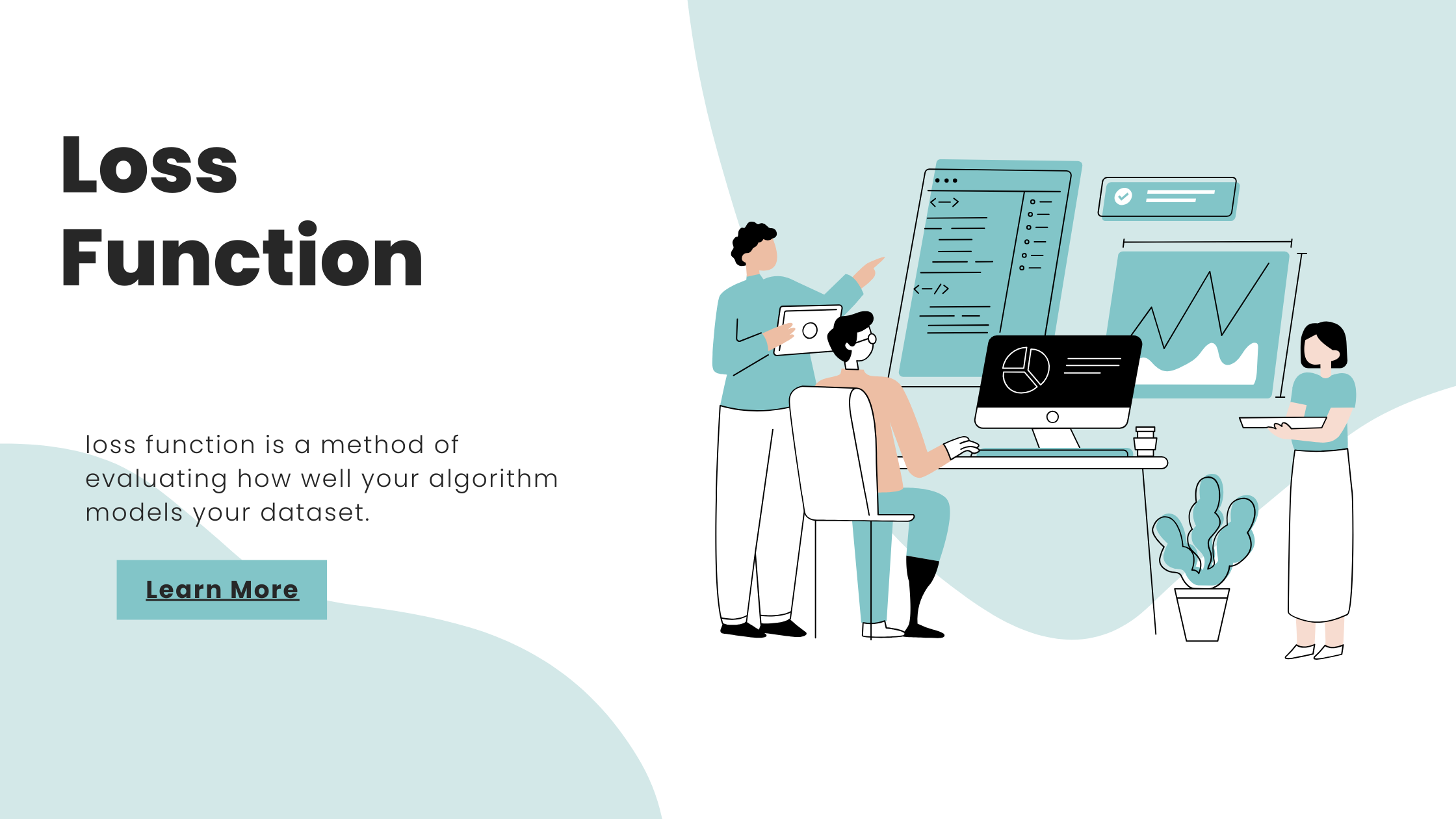Loss functions are a critical component of machine learning algorithms. They play a pivotal role in training models and optimizing them to make accurate predictions. In this guest post, we will delve into the world of loss function, discussing what they are, why they matter, and some commonly used loss functions in various machine learning tasks.
A loss function, also known as a cost function or objective function, is a crucial component in the field of machine learning and optimization. It is a mathematical function that quantifies the difference between the predicted output of a model and the actual target values. The primary purpose of a loss function is to measure how well a machine learning model is performing and to provide a quantifiable value that can be minimized during the training process.
Here are some key points about loss functions:
-
Purpose:
-
Loss functions measure the error or discrepancy between a model’s predictions and the actual data. By optimizing this function, machine learning algorithms adjust their parameters to improve the model’s performance.
-
Optimization:
-
During the training process, machine learning models iteratively adjust their internal parameters to minimize the loss function. This process is often referred to as “optimization” or “gradient descent.” The goal is to find the set of model parameters that result in the lowest possible loss.
-
Performance Evaluation:
-
Loss functions assess how well a model is doing on a specific task. Lower loss values generally indicate better model performance, as they suggest that the model’s predictions are closer to the true values.
-
Task-Dependent:
-
The choice of a loss function depends on the nature of the machine-learning task. For example, regression tasks (predicting continuous values) often use mean squared error (MSE) as the loss function, while classification tasks (categorizing data into classes) use cross-entropy loss.
-
Customization:
-
In some cases, custom loss functions are designed to address specific machine-learning problems. These customized loss functions are tailored to capture the nuances and requirements of a particular task.
-
Robustness:
-
Some loss functions are more robust to outliers or noisy data than others. For instance, mean squared error can be sensitive to outliers, while Huber loss is designed to be less affected by extreme values.
-
Trade-offs:
-
Different loss functions may lead to different trade-offs in model behavior. For example, some loss functions may prioritize reducing false positives at the expense of increased false negatives, while others may balance these aspects differently.
What is a Loss Function?
In the context of machine learning, a loss function, also known as a cost function or objective function, is a mathematical function that quantifies the difference between the predicted values of a model and the actual target values. The primary goal of a loss function is to help the model learn and adapt its parameters to minimize this difference, thus improving its predictive accuracy.
Why Are Loss Functions Important?
Loss functions are fundamental to the training of machine learning models for several reasons:
-
Optimization: Loss functions are used in the optimization process to adjust model parameters (weights and biases) to minimize the loss. This process, often called backpropagation, is at the heart of model training.
-
Evaluation: Loss functions provide a quantitative measure of how well a model is performing. Lower loss values indicate better model performance.
-
Customization: Different machine learning tasks require different loss functions. You can choose or design a loss function tailored to your specific problem, helping the model learn what is most important.
Common Loss Functions
-
Mean Squared Error (MSE): MSE is one of the most commonly used loss functions for regression tasks. It calculates the average squared difference between predicted and actual values. MSE gives more significant penalties to larger errors.
-
Cross-Entropy Loss: Cross-entropy loss, also known as log loss, is commonly used in classification tasks. It measures the dissimilarity between predicted class probabilities and the true class labels. It is especially useful for binary and multi-class classification problems.
-
Hinge Loss: Hinge loss is often used in support vector machines and other classification algorithms. It encourages the correct class’s margin to be as large as possible while penalizing misclassifications.
-
Huber Loss: Huber loss is a robust alternative to MSE that is less sensitive to outliers. It combines quadratic and linear loss components, making it suitable for regression tasks with noisy data.
-
Kullback-Leibler Divergence: KL divergence is used in probabilistic models like variational autoencoders. It quantifies the difference between probability distributions, which is useful for generative models and information retrieval tasks.
-
Custom Loss Functions: In many cases, domain-specific tasks require custom loss functions that capture the intricacies of the problem. Designing your loss function allows you to fine-tune your model for optimal performance.
Choosing the Right Loss Function
Selecting the right loss function is crucial for the success of your machine learning project. Consider the nature of your task, your data, and the desired model behavior when choosing a loss function. Experimentation is often necessary to find the best fit.
Conclusion
Loss functions are a fundamental concept in machine learning, shaping the way models learn and adapt. Choosing the appropriate loss function for your task is vital to achieving accurate and reliable predictions. Understanding the various loss functions and their applications is a vital step in becoming a proficient machine learning practitioner. Whether you’re working on regression, classification, or a specialized task, the choice of loss function can make all the difference in your model’s performance.




